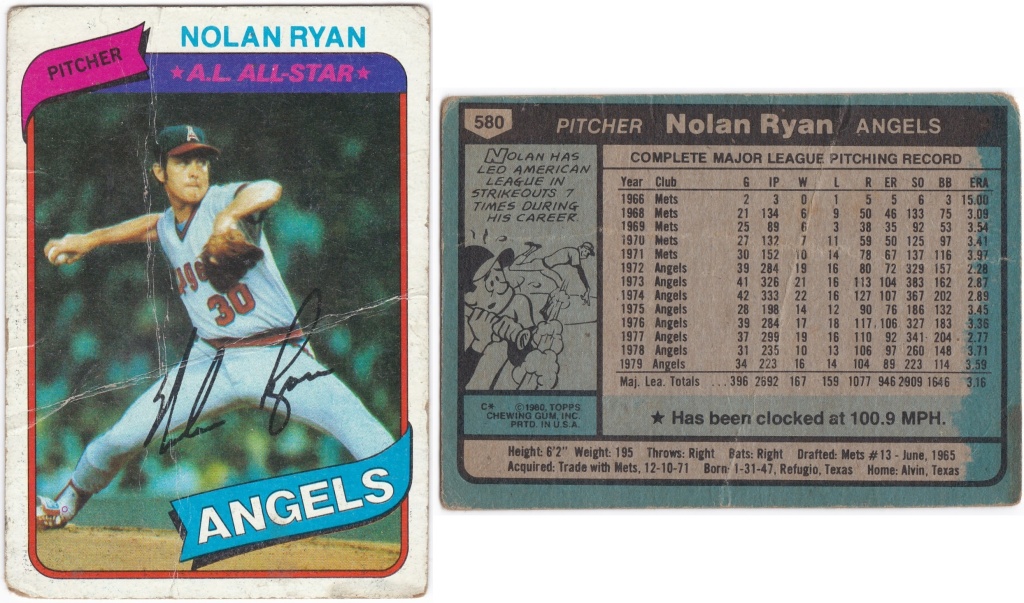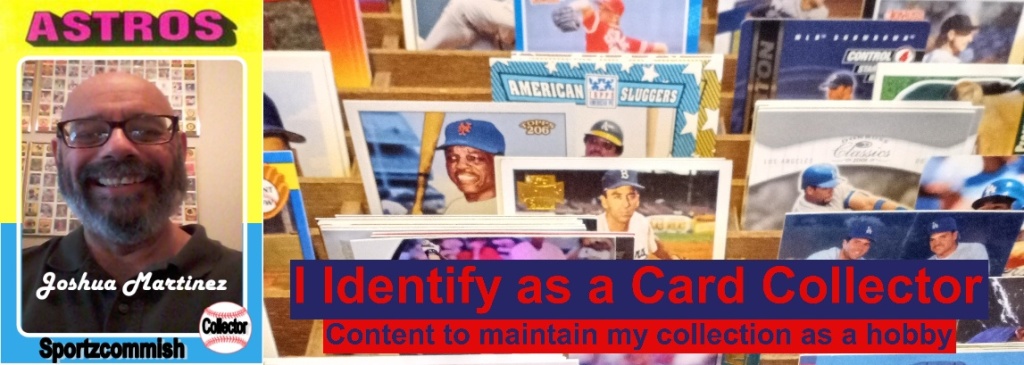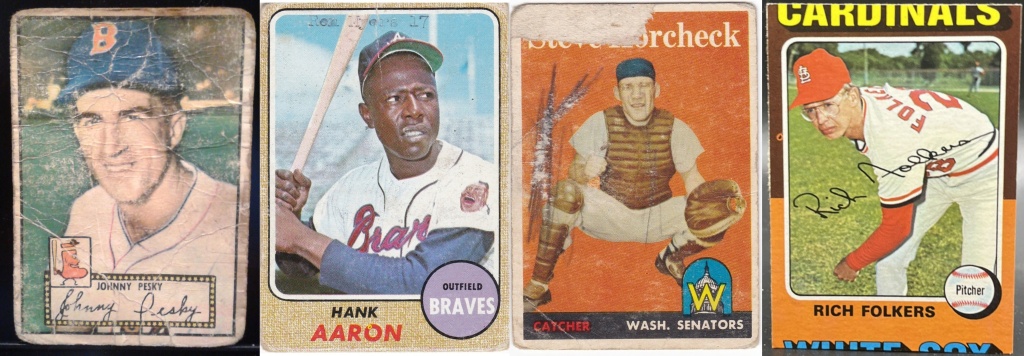Card condition is not irrelevant to me. It matters. Somewhat. But it’s not of utmost importance. If you saw my vintage collection you’d probably cringe at parts of it. If you saw some of my modern collection you’d shake your head disapprovingly. I have my thresholds, or tolerances, on what is acceptable in my collection. But as far as the significance it has in a trade or purchase, condition has never been a deal breaker on cards coming my way. It has caused trade offers to be declined by others, and I’m fine with that because I am not going to impose my personal standards on others.

For example, a few weeks ago I saw matches for a small trade and excitedly set up a deal and quickly scanned the trio of cards. The offer was ready to be sent to my potential partner, but I decided to check the member’s profile page for any hints on how probable the deal would actually be. Much to my chagrin I ended up deleting the offer – never got sent because his preference is for cards to not have ANY writing on them (assume scribbling, doodling, marking, etc., not text and stats). All three in my offer do. And even though the writing, with marker, is only on the back and doesn’t make the text unreadable, at least not entirely, this person’s preferred minimum requirements exclude writing. The condition of what I would have sent would be fine with me as the receiver, but that’s me. Those are MY standards.
At the same time I just completed a deal with a TCDB member who stated that he wasn’t too picky on the condition of cards. He further emphasized, “Of course I like near mint cards, but I also like well loved cards.” He also said scans of what I would send him weren’t necessary; so I didn’t provide them. It is obvious that he has a higher grading acumen than I do as what I received was in (much) better condition than what I sent him. In fact I may have made him more picky on condition after our trade.
The bottom line for me is that I don’t have the financial resources, nor desire for that matter, to spend more money to upgrade the condition of my collection. I honestly do not recall ever upgrading my collection. Instead on most occasions I will send the best copy I have in a trade, even if it means going into my personal collection. But don’t nominate me for sainthood for being highly altruistic because there are some cards that are untouchable as replacements. Condition matters. Somewhat.
So what’s in my collection that has severe condition issues? Here’s a sampling.


For vintage, defined as anything pre-1980, MOST, NOT ALL, conditions are acceptable. Within those three cards one can see the various standards that would keep them out of some collections. There’s an off-centered back, rounded to gnawed to broken off corners, and creases to cracks to ripped off innards. But there’s no writing!
Why are these in my collection? The Morgan RC (apologies to Jackson) cost me $5.00; so it was purely an economic decision. But all of it is visible – the stats aren’t missing and neither is any of the text on the front or back. The Kellogg’s cards were part of trades, and, again, with the Howard card all the information is there except for a part of the MLB logo, and I’m not too keen on unions anyway. The Matlack would generally present a problem for me as it is technically intolerable. BUT it came with more than 80% of the 1973 set and I couldn’t decline that trade. The damage of the Matlack card described by my trade partner was a “wormhole”. It does take away from the basic frontal design as the name banner is cutoff, and on the back the stats are missing that right side chunk off the table. It remains in my collection with no thought of an upgrade.


So there’s this mystical phenomena, a mindset, when leaving the 70s. We’re leaving tie-dyes and ragged jeans, and entering an era of upscale fashion with larger collars and polyester suits. With that condition expectations are raised. A 1980 card should be Near Mint. Yeah, well, I’ve always leaned toward – embraced, really – a counter culture. I’d stop short of calling it a rebellious bent, but I try to avoid mirrors nonetheless (think about that one on your own). I will say this: I have the McCovey and Ryan cards shown above in my collection, and it’s more because they came with purchased lots, but I strongly prefer much better conditions on modern cards, i.e. 1980 and beyond (that’s forward/future). I actually have a better grade McCovey, but it’s currently in the trade drawer. Condition matters. Somewhat.
Up to this point I have not rejected a trade due to condition. And I may never do so, but don’t tempt me. If a card has issues, just let me know. Condition matters. Somewhat. I’ll probably accept the trade for I am not an investor, I identify as a card collector.


Leave a comment